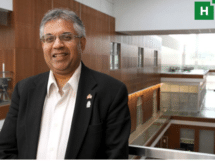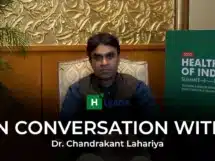Malaysia has begun COVID vaccinations while remaining, controversially, in a state of emergency. The country’s battle against the infection has been one of clusters and movement control orders. Tariq Hashmat of HealthLEADS speaks to Dr. Ahmad Firdaus
As of February 23, the Southeast Asian economic powerhouse had recorded over 288,000 cases of COVID-19 and over 1,000 deaths. While cases have begun to decline from what seemed like a second wave, the active caseload remains over 30,000.
Hundreds of people have been arrested for violations of the Movement Control Order – the country’s versions of lockdown – as authorities double down on strict control.
HealthLEADS spoke to Dr. Ahmad Firdaus, a medical officer with the Government of Malaysia, and co-founder of Medical Mythbusters Malaysia, a group of doctors and medical professionals tackling and debunking medical myths and misinformation in the country. Dr. Firdaus is also a member of First Check.
Below are excerpts from the interview.
Talk us through the whole process of how Malaysia has managed COVID-19 so far.
We started with a lot of initiatives immediately after the first few cases of outbreaks in Malaysia in January 2020, when there were plenty of clusters here.
Movement control orders were implemented – not a full lockdown but some essential services were allowed to go on, people were encouraged to work from home, and there was no interstate travel. Even inter-district travel was limited.
We did succeed in bringing down the cases, but then had a second wave in September. Subsequently, there were higher and higher cases. Only now, for the past few weeks, we’ve managed to bring it down a little bit from the highest of over 4000 to now around 3,000 plus cases per day.
Yes, it’s been a long and tiring process. We’ve gone through multiple versions of movement control order and managed to bring it down a bit every time we’ve implemented them. We had clusters in the prisons and workplaces, especially factories, that were pushing cases higher.
It’s undeniable that the COVID-19 is within the community. We’ve encouraged people to have physical distancing, face mask wearing, and also encourage the use of hand sanitizers and hand wash.
Malaysia’s version of lockdown, the Movement Control Order, got into a controversy when people were arrested by the hundreds for violations. How do you see that?
From a public health perspective, the movement control order was one of the components in pandemic management. In order for the Movement Control Order to be implemented properly, there is a need for enforcement. All these people who were caught were in violation of the movement control order.
We want to make sure that the public knows that this is something serious, everyone needs to be involved, and those who flouted the rules were becoming a threat to public health. We needed to show that we mean business.
Do you not think the arrests may have contributed to the clusters in prisons?
It’s not ‘arrest’ – as in these people were not brought to prison. They were given the summons to pay the penalty for violating the MCO, currently 1,000MYR (≈$248/-). The clusters in prisons are among prisoners who are already in there. As for factories and workplaces, most of these clusters happen in places where the workers were living in small confined spaces such as dormitories. So those were where it’s almost impossible to implement physical distancing in places.
Malaysia has over 55 million doses of vaccines on order. Inoculations with the Pfizer vaccine have already begun. What is the country’s vaccination strategy?
For the national immunization program for COVID-19, there will be three phases to vaccine distribution. The first phase will involve frontline workers such as healthcare workers, the police force, the armed forces – those in direct contact with the community, wherein their nature of work makes them susceptible to infection.
The second phase will be sometime in May and would involve the high-risk population – those who are at high risk to develop severe complications of COVID-19, those with comorbidities such as obesity, diabetes, hypertension, as well as renal failure patients. The third phase will involve healthy adults above the age of 18 years. This will take another few months, and will happen towards the end of this year.
These phases will involve different forms of vaccines which will be acquired by the government.
Do you see a big portion of Malaysia’s population getting fully vaccinated by, let’s say the beginning of 2022?
Our target is to achieve herd immunity of 80 percent of the population. How well that can be implemented is something we have to see, because at the moment, like everywhere else, we’re having a hard time battling an infodemic, with misinformation and disinformation.
People are saying the vaccine is just another way of controlling the population, or it has some 5G elements to control your mind, Bill Gates is behind it, and all that stuff. For us, it may seem a bit difficult to understand, and we don’t believe it because it is illogical. But for the general public especially in the communities where the education level isn’t as high, these are their bread and butter, this is what they believe in.
It’s a very difficult task ahead. So far we’ve been handling it, I wouldn’t say in the best way we can, but we are handling it slowly.
Talk a little more on how the covid information space has evolved. At Medical Mythbusters Malaysia, what are the challenges that you’ve faced in 2020?
Since the start of the COVID-19 pandemic, we’ve seen more organizations, more agencies and the government becoming aware of what we call as risk communication. They are now more aware of what we need to do to convey proper information to the public.
We’ve seen multiple agencies coming together to deliver messages that are based on evidence, factual and things that can respond to this infodemic.
For Medical Mythbusters Malaysia, we have networks with government agencies such as the Ministry of Health, Ministry of Science and Technology, ones who are in charge of the acquiring of vaccines. We’ve gotten in touch with all these agencies to figure out the best ways to convey information and to battle misinformation.
The keyword is “forming alliances”. Individually we can never do this. The government sector needs the NGOs, and the NGOs need the government sector.
How big of an issue is vaccine hesitancy in Malaysia, historically and now for this vaccine? And what do you think is your biggest challenge in these efforts?
Vaccine hesitancy is something we had noted since our formation (of Medical Mythbusters Malaysia) back in 2016. We noted a sudden increase in cases of measles and diphtheria in our communities. As a medical officer working in the government sector, when I was in the hospital, I had never seen diphtheria or measles cases before.
Since the advent of social media, with its role in dissemination of the misinformation, we’ve seen an increase in vaccine hesitancy. We see vaccine-preventable disease making a comeback in Malaysia and even causing death.
Initially, we were working solo. But as there were more NGOs coming in, the government saw a potential benefit in that we can convey to the public and things started to move on
I think with COVID-19, people now see the threat. The government now sees what we’ve been saying before, that anti-vaxxers can be harmful to the public. We have followed what has been advised by the World Health Organization. We do not target nor do we engage or give education or information to those considered as vaccine denialists. They have a fixed belief and whatever we say won’t be useful to them or to us.
But we are targeting vaccine-hesitant individuals, they are sensitive. By giving them proper, easy-to-understand data and information, they relate to their lives. And we’ve seen a lot of conversions from those who are vaccine-hesitant, after we’ve given them enough information, all that they wanted to know, they are more comfortable with getting the vaccine.
How crucial is social media to the NGOs as well as the government in tackling the anti-vaccine movement? How does it fit into the strategy?
We are bringing the war into the war zone. Social media is where misinformation breeds. It’s a cesspool in there. In order to target those people we need to be right in the action, and that’s why we are here.
We have the insight of being in the system. We see the impact of something such as COVID-19 or vaccine-preventable diseases. We managed to convey these messages without interfering with confidentiality issues, packaging it such that we inform the public in ways that they understand. It’s just that doctors, or even scientists, are not the best storytellers, they are not the best communicators.
The best method is actually by storytelling. Anti-vaxxers and their movements use testimonies and storytelling. You bring the war to them, use the same strategy to bust all these medical myths.
Talk us through how Malaysia’s public health has fared during the pandemic vis-à-vis the immunization coverage amongst children and the access to treatment facilities for people suffering from diseases such as cancer.
It has been a tremendous burden to hospitals and public health systems. In the early phases of COVID-19, a lot of medical services were halted. Appointments and elective surgeries were rescheduled, which really impacted healthcare for the community. But eventually, we figured out that things need to move on. The government managed to implement steps to ensure there are gatekeepers in place so that all patients still get their medications and surgeries.
But to prevent any outbreaks in the hospital, we have the gatekeeping process with screening via antigen testing, etc. Hospitals and clinics function like normal, but at a lower and limited capacity, making sure clinics and hospitals are not overcrowded. I can’t say that everything is fine. But healthcare is still being provided to the general community.
The newer strains of COVID-19 are big in the news everywhere. How is it in Malaysia?
It is recognised as a threat, yes. There have been multiple announcements by the Ministry of Health about the impact of all these new strains or variants of COVID-19.
But in general, even if there’s a new strain or variant, we are still sticking to the public health measures already in place. Whether it’s the UK variant or the South African variant, you still need to maintain physical distancing, use of face masks and hand sanitizer, and proper handwashing.
From a public health perspective, it doesn’t change much even. Though we’ve had the UK variant here, we’re also not seeing a drastic increase in numbers.
Final question – how do you see the rest of 2021 shaping up for Malaysia with respect to the pandemic?
I’m hoping that in 2021, there’ll be a drastic reduction of COVID-19 in Malaysia. But to be honest, I don’t think we will be able to recover by 2021. It is going to take a long time for herd immunity to develop. I’m expecting maybe mid-2022 for everyone to be vaccinated and for us to develop herd immunity. In the meantime, we still have to maintain all the public health measures.
Life will not be back to normal, believe me. It’s not going back to normal, but it will resemble some sort of normality.
With all the talks about vaccine passports, movement will be allowed but limited. Hopefully, our economy will also improve as well. COVID-19 has been very bad to the less fortunate communities – we have what we call as B40, below 40 percent, people with low income.
Hopefully, by 2022 everything will be resolved. We get back to partially living a normal life. I’m really hoping for that, I really want to travel.


















Add Comment